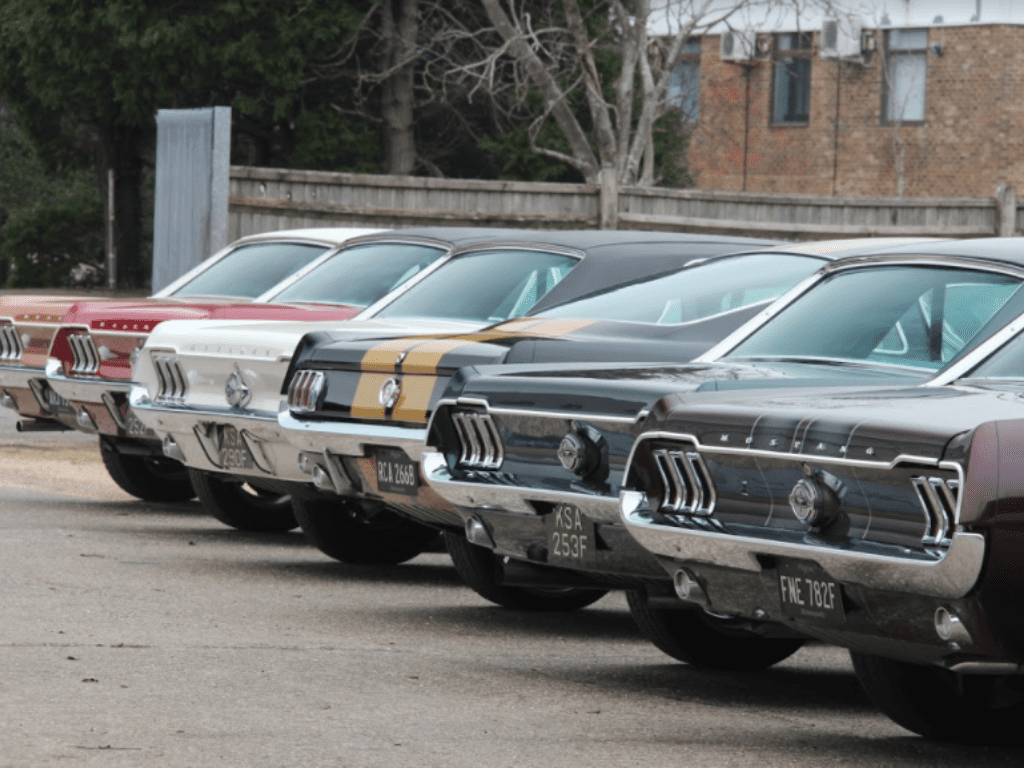
Insuring your classic car is in some ways similar to insuring other vehicles, with some key distinctions.
We may receive payment from affiliate links included within this content. Our affiliate partners do not influence our editorial opinions or analysis. To learn more, see our Advertiser Disclosure.
In many ways, insurance for classic cars travels in the same lane as insurance for regular cars. But there are some key lane departures—including potentially lower premiums for classic car insurance.
What Is a Classic Car?
People have different opinions of what qualifies as a “classic” or “collector” car, but the term often refers to a vehicle manufactured in 1990 or earlier. Examples of classic cars include the 1932 Ford Roadster, 1957 Corvette, 1969 Camaro and 1978 Pontiac Firebird Trans Am.
A variety of types of vehicles may fall under the classic car umbrella, such as:
- Antique cars
- Classic military vehicles
- Custom cars
- Exotic cars
- Muscle cars
- Race cars
- Trucks

1969 Chevrolet Z28 Camaro Sport Coupe
VanDerBrink Auctions
How Does Classic Car Insurance Work?
An insurance policy for a classic car looks a lot like an insurance policy for a regular car. A classic car policy can supply liability coverage, uninsured and underinsured motorist coverage, personal injury protection and medical payments coverage.
Related: Compare Rates On Car Insurance With EverQuote
But classic car insurance steers in a different direction when it comes to collision and comprehensive coverage, both of which cover damage to your own vehicle. Unlike with a regular car, collision and comprehensive coverage for a classic car is normally based on the vehicle’s “agreed value.”
- Collision coverage pays for damage to your car if you hit an object such as a telephone pole or another car.
- Comprehensive coverage pays for damage to your vehicle due to weather, fire, explosions, floods and other problems. In addition, it covers theft of the car and damage from colliding with deer and other animals.
If you’re buying comprehensive and collision coverage for a classic car, you’ll generally want to use an agreed (or guaranteed) value for the vehicle. This is a dollar amount agreed to by you and the insurer regarding how much value the policy places on your classic car. The agreed value is paid if the vehicle is a total loss, minus any deductible.
Regular cars typically are covered for the “actual cash value,” which is the depreciated value of the vehicle at the time of the accident. Since many types of classic cars grow in value over time, the standard “actual cash value” policy isn’t the right type of coverage.
When you’re buying classic car insurance, you and the insurer arrive at an agreed value based on factors such as the car’s:
- Current market value
- Condition
- Replacement cost
- Cost of special parts
Another major difference between classic car insurance and regular car insurance is that the premiums for covering a classic car often may be lower. Why? Because you’ll be driving a classic car less than an everyday car.
For example, insurance for a 1957 Corvette, in good condition and driven only occasionally, is $427 a year from Hagerty Insurance for a 50-year-old good driver in California. The same driver, with a daily commute, would pay about $2,300 to insure a new Toyota RAV4.
How Do You Qualify for Classic Car Insurance?
Just because a car was made in 1969 doesn’t automatically mean you can qualify for classic car coverage. Several factors can affect your ability to buy classic car insurance:
- How much the car is driven. If you want classic car coverage, you may not be able to regularly commute to work, run errands or pick up the kids from school. A classic car policy may limit the number of miles you can drive in a year.
- Where the car is stored. When you aren’t showing off your classic car, it likely will need to be stored in a locked, enclosed, private structure like your home garage or a storage unit. Some insurers may let you park a classic car under a carport, in a parking garage or in a driveway.
- Your driving record. If you’ve racked up numerous speeding tickets, a DUI conviction or other serious driving offenses, you may be unable to purchase classic car insurance.
- The condition of the car. Some insurers might not offer insurance for classic cars that are in bad shape or have been damaged
If you’re unable to purchase classic car insurance, you might be able to buy a standard auto insurance policy to cover your classic ride. But with a standard policy, the insured value of the car may fall short of the real value.
John Egan is a freelance writer, editor and content marketing strategist in Austin, Texas. His work has been published by Experian, Bankrate, National Real Estate Investor, U.S. News & World Report, Urban Land magazine and other outlets.
